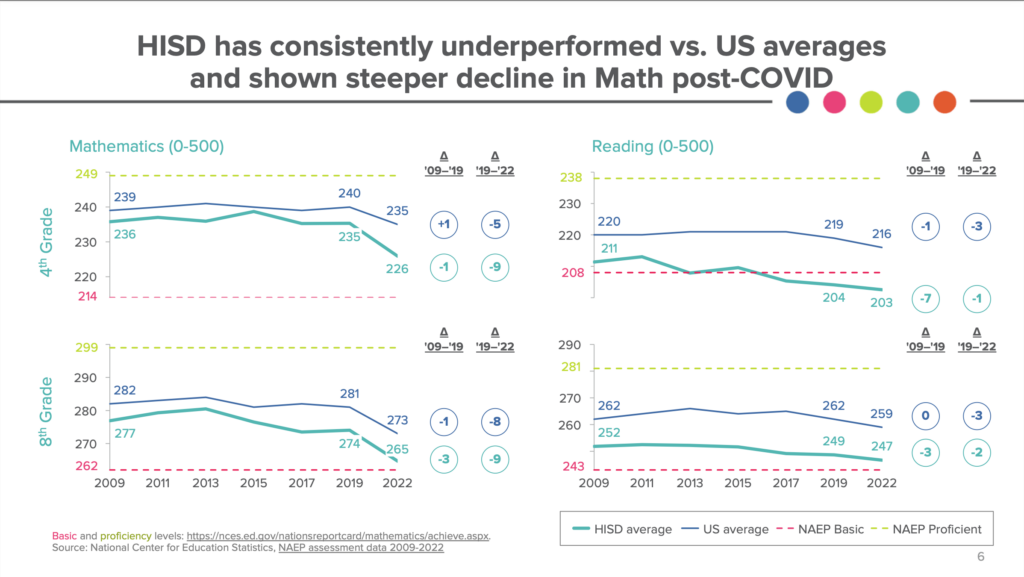Houston scores declined, and here’s what it means
What is NAEP and why do we look at their scores?
NAEP stands for the National Assessment of Educational Progress. According to nces.ed.gov, NAEP is a “congressionally mandated program that is overseen and administered by the National Center for Education Statistics (NCES), within the U.S. Department of Education and the Institute of Education Sciences.”
Assessing student achievement and learning experiences across the country helps paint a more full picture of how and what students are learning. It’s a nationally normed test, and looking at national standards means we are able to see state-to-state comparisons that go beyond the assessments given in Texas, which measure whether students are meeting grade-level expectations.
National NAEP results
Nationally, NAEP scores declined significantly in 2021, reflecting learning losses following the pandemic. Math scores were more deeply impacted, while reading scores saw a smaller dip. Scores were consistent with the STAAR and accountability data that suggests low student achievement.
Houston NAEP results
Houston ISD, one of four districts in Texas to participate and 27 total across the country, saw a similar decline across subjects and grade levels. But Houston’s reading scores fell significantly below the national average in 2021 compared to math, which was closer to the national average.
Houston’s reading performance has consistently fallen below the national average over the last decade, with 4th grade reading dropping even below the NAEP Basic threshold in 2019. In 2021, we noticed that student performance on STAAR exceeded pre-pandemic levels for some districts, including HISD (47% meets/masters for 4th grade), but declined on NAEP reading (44% meeting basic standards). This suggests STAAR might be considered a low bar for proficiency compared to national standards.

Large equity gaps, explained
In terms of equity gaps, Houston ranks among the cities with the largest gaps in NAEP scores for Black and Hispanic students, compared to white students as well as economically-disadvantaged vs non-economically-disadvantaged.
-
- Houston has the third largest gap in Black vs. white students’ 4th reading and 4th grade math scores
-
- Houston has the third largest gap in reading for economically-disadvantaged students and the fourth largest gap in math among economically-disadvantaged students
-
- Houston has the fifth largest gap in Hispanic vs. white students’ 4th grade reading and math scores
Where do we go from here?
The results from NAEP tell us that it’s critical that we continue to focus on raising the bar of rigor and addressing learning loss in both math and reading. When looking at nationally normed tests, reading scores are abysmal, and this could mean Houston students are largely not graduating with the right skills for postsecondary and career success. Good Reason Houston believes that more intensive focus on supporting historically marginalized student populations is needed to ensure equitable access to high-quality schools for all kids.


